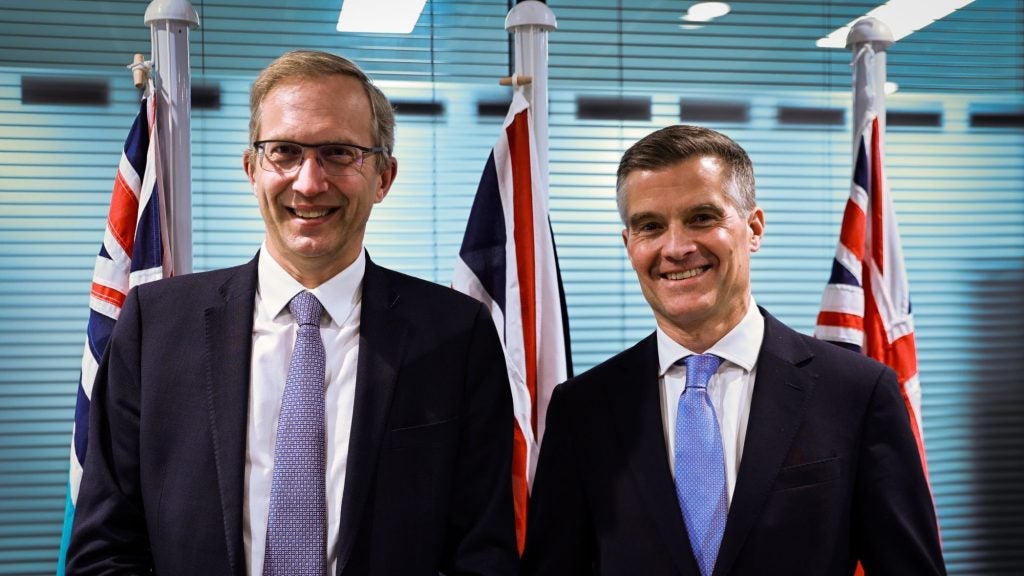

Shortly before 11.30pm on Saturday 22 October 2011, teenager Georgia Varley was struck and killed by the same train she had alighted from just 30 seconds earlier at Liverpool’s James Street station.
The 16-year-old was leaning on the Merseyrail train as it began to move out and the platform edge gap was wide enough for her to fall through and onto the track. The post-mortem toxicology report revealed that her blood alcohol concentration was nearly three times the UK legal drink drive limit.
An investigation into the tragedy by the Rail Accident Investigation Branch (RAIB) noted that, while the rail sector’s overall safety record has improved, accidents at the platform-train interface (PTI) have increased – between April 2003 and April 2013, there were 30 PTI-related passenger fatalities. The report also stated that industry operational initiatives had failed to deliver improved safety.
As director of maintenance and operations services at Network Rail and the former head of operator First Capital Connect, Neal Lawson is the man charged with reversing this trend and coordinating an effective long-term PTI safety strategy across the 2,500 stations that comprise the UK rail network.
See Also:
"High-profile incidents, including the accident at James Street, highlighted starkly what can happen if we don’t implement good PTI risk management," he states. "We decided to work our way back from the platform and the train in order to analyse everything from station furniture to wider passenger behaviour. Why do people rush and perhaps not pay attention when boarding and alighting from trains? How can we try to influence that behaviour with our wayfinding and dispatch operations?
How well do you really know your competitors?
Access the most comprehensive Company Profiles on the market, powered by GlobalData. Save hours of research. Gain competitive edge.

Thank you!
Your download email will arrive shortly
Not ready to buy yet? Download a free sample
We are confident about the unique quality of our Company Profiles. However, we want you to make the most beneficial decision for your business, so we offer a free sample that you can download by submitting the below form
By GlobalData"The momentum behind the project convinced the Rail Standards and Safety Board (RSSB) to take a new approach to PTI strategy and for the first time we formed a cross-industry implementation group, of which I am the chairman. The analytical tool developed during the project has become the industry benchmark for how we carry out rail safety assessments and analyse interface risks."
Mind the gap: potential PTI modifications and cost implications
The gap between train and platform is designed to be practical. It must be large enough to provide sufficient space for a variety of different train types to run safely and practicably without creating a physical obstruction, but also be small enough to allow people to board and alight quickly and safely.
The gap cannot be closed nor can it ever be exactly the same across the entire UK rail network for the simple reason that stations were built at different times by different historic companies.
"The platform-train gap can be dealt with in any number of ways," Lawson explains. "We looked at platform height, the distance from the track, potential gap fillers and modifications to the trains.
"Short steps in doorways aren’t ideal for boarding and alighting, so we considered installing ramps. However, that requires the manufacturer to carry out feasibility studies, and the specifier to analyse and identify potential PTI issues in initial train specifications – and that isn’t easy. When you start looking at granular system elements such as wheel sizes and on-board equipment on trains, then you need to engage much earlier in the project lifecycle to ensure it is engineered properly.
"Like everyone else, I believed level access from platform to train had to be the best solution but level access without sufficient contrast, while excellent from an accessibility perspective, can mean that passengers trip over the small gaps, so a bigger step rather than level access may be preferable.
What about the cost implications of modifying platforms and train fleets to comply with new PTI specifications? Lawson is quick to point out that mass retrofitting is not part of the long-term plan.
"Future specification of platform edge doors or gap fillers may be solutions that have marginal additional costs attached to them when undertaking station upgrades but we’re not proposing that we modify a bunch of stations specifically around the PTI," he says. "I also don’t see us asking manufacturers and franchisees to offer guarantees in relation to the numbers of PTI accidents, but we may amend service level agreements to encourage continued improvement.
"Going forward, if we are specifying new trains and stations, then the correct PTI requirements should absolutely be made up front and we’ve engaged the policy-makers to make that happen."
Smartphone apps are transforming the way we travel, and the transport app eco-system is more fertile than ever.
Action stations: wayfinding strategies and quantitative data analysis
With a total 1.6 billion journeys recorded across the congested UK network in 2014 and ridership set to increase with the advent of Crossrail and HS2, advanced ergonomic wayfinding techniques such as those employed at the rejuvenated Blackfriars and Farringdon stations also underpinned the new PTI strategy.
"Crowding imposed additional risks that we needed to look at to ensure our existing standards and engineering solutions were satisfactory," confirms Lawson. "That means wayfinding, understanding passenger movement and flows, and modifying behaviour to make it easier to find your way around the station and onto the right train; for example, by offering information on lightly loaded carriages.
"This allows passengers to remain concentrated and in the moment, and perhaps avoid a last minute dash across a busy platform that means they miss that crucial step onto the train."
Unprecedented collaboration from all industry stakeholders allowed Lawson and his team to gather and correlate data from past PTI incidents – everything from age, gender, location and seasonality to whether the person involved in an incident was intoxicated or carrying a certain type of baggage.
"It’s easy to assume that PTI simply refers to the gap between train and platform but in terms of boarding and alighting there are many other incidents that happen, including wheeled transport such as pushchairs and mobility devices falling off the platform onto the track," Lawson explains.
"We had direct access to the SMIS database, which includes quantitative data such as numbers and age profiles, as well as daily logs from train operator companies’ own incident reporting systems. Exposure to these data streams allowed us to really get under the skin of what was going on."
The research highlighted a number of salient factors that contribute to PTI accidents. A total of 9% of all incidents involved intoxication while 15% involved passengers carrying various forms of baggage. More females than males (around 65%) experience accidents while getting on or off trains and women aged 50-71 are involved in the highest number of incidents while boarding and alighting.
Armed with the forensic data, PTI strategy will focus on six areas: data and intelligence gathering; influencing public behaviour and helping station staff; train stopping and dispatch, optimising the step gap between platform and train, and improving operational performance and capacity.
Action stations: risk-reduction targets and the Lend a Helping Hand campaign
With clear goals established, Lawson is confident that the project’s short, medium and long-term risk-reduction targets can be met, although at the outset industry buy-in was far from guaranteed.
"Certain members of the RSSB board didn’t think we could get the industry in place on this, but if you ever wanted an example of collaboration across the industry then this is it," he enthuses.
"We established safety workshops with frontline staff, safety champions in business, senior representatives from train operating firms, policy makers and regulators, and manufacturers. We have Passenger Focus on board now and ASLEF is also keen to engage, as are other rail trade unions.
"Crossrail is involved, as is HS2. They want to be involved and in line with the strategy at the point of specification on issues such as new platform heights, which is good news," he adds.
A high-profile media campaign, ‘Lend a Helping Hand’, will target passenger behaviour across the UK network. Again, industry opinion was divided as to its effectiveness, but Lawson believes that it will appeal to the British public’s sense of altruism and help foster a culture of personal responsibility.
"In terms of marketing, our safety campaigns were off the scale in a bad way," he admits. "People had no association with it, it was confused, we were running multiple campaigns at the same time – Network Rail and Transport for London had posters up too – and the message was losing its impact.
"The aim of Lend a Helping Hand is to sell safety without being a parent figure, which doesn’t work. We want to raise awareness without being accusatory. The Dr Suess style wasn’t to everyone’s taste, particularly the engineers, but without exception everyone in the industry has agreed to pick it up.
"We are not asking the public to do our job for us, but our staff can’t be everywhere. The British public likes to be helpful and we just pointing out where they can help someone into the carriage."
I conclude by asking Lawson to specify key short- and medium-term deliverables and PTI targets.
"The risk reduction targets are based around the short, medium and long term," he explains. "The short term refers to Network Rail’s Control Period 5 (April 2014 to March 2019), the medium to CP6 (2019-2024) and CP7 (2024-2029) and the long term is beyond that. The aim, based on our research and analysis, is to have 200 less accidents a year as a result of the new PTI strategy.
"In the next 12 months we will carry out the immediate actions, but also continue the research and formulate action plans covering tactical best practice sharing, which includes the Opsweb website, the risk assessment tool, hard deliverables and ongoing research. It’s an ongoing strategy for life."







